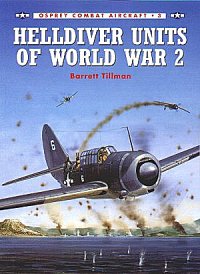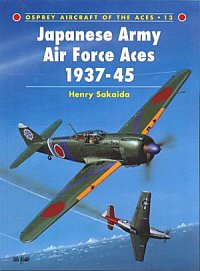

Another cold winter day for the Geiger Tigers.
F-102A Delta Daggers on alert at Geiger Field.
The book is in standard Osprey format: trade paperback, 96 pages, with a big centerspread of color profiles and figure portraits of pilots, lots of photographs and enough text for the average modeller to have an idea of the historic context in which the aircraft and its crews operated. In the case of the Helldiver, this is the tale of a disappointing airplane that never lived up to its original specifications, yet made a major contribution to the naval war in the Pacific.
Modellers who have the ProModeller kit and my article on converting the model to the SB2C-1C and SB2C-5 will find lots of photos and profiles to make their own individual version of these aircraft. I would suggest that you use the material in my article and the "Detail and Scale" book, rather than these profiles, to guide you in creating the particular version. I say this because some of the profiles show aircraft labelled SB2C-3s with SB2C-1C type cockpit transparencies, and do the same thing to SB2C-4s which did not have the glass aft of the pilot's sliding canopy. An SB2C-4 of "Yorktown," which is the subject of the ProModeller kit, is identified as an SB2C-3 in the profiles while the photograph is identified correctly as an SB2C-4. These inaccuracies do not detract from the overall quality of the book, but are merely reminders that most profiles are only markings guides.
The photographs are very valuable, as is the outline history. One discovers that if you are going to do a Helldiver on the "Mission Beyond Darkness," you want an SB2C-1C, since all the squadrons at the Marianas were equipped with that sub-type. If you are looking to do a Leyte Gulf Helldiver, then the likely candidate is an SB2C-3 (the easiest conversion of all), while Tokyo Strike Helldivers and the suqadrons that sank the "Yamato" would be SB2C-4s. This is the kind of useful information modellers are looking for.
I have found all of the Osprey books to be valuable additions to my research library, and this latest title continues the tradition. I've noticed it at discount prices at on-line hobby shops, so shop for bargains and save money. Whatever price you pay, if the Helldiver is one airplane you're interested in, you won't be disappointed.

Title: "Helldiver Units of World War II
Author: Barrett Tillman
Publisher: Osprey
MSRP: $15.95
Reviewer: Thomas M. Cleaver
.
Henry Sakaida is a well-known amateur historian in Southern California, whose specialty has been tracking down participants in particular air battles of the Pacific War and bringing the survivors together. He has been almost solely responsible for the increased recognition of Japanese pilots in American aviation historiography, and this book is an excellent outline sketch of his work.
The chapters break down into coverage of the major air campaigns the JAAF participated in - China/Nomonhan, Southeast Asia, New Guinea, Home Defence - with a good outline history of the particular campaign and interesting biographies of the leading pilots associated with it. There are numerous photographs of Japanese pilots that have never been identified before, though the aircraft photos do not really break new ground to anyone who has read the standard sources on Japanese aircraft development. There are a few bloopers like identifying Chester Nimitz as the American commander at Coral Sea (all right, all right, technically he was, but not on-scene), but nothing that harms the overall quality of the work.
As is usual with the Osprey series, the color profiles are the major reason to purchase the book. It is finally possible, using these, to build models of aircraft flown by particular aces, something that has not been that easy heretofore. The color profiles are beautifully executed, and provide good motivation to haul out those Arii and Nichimo Oscar kits and Nichimo Nicks anew, and to hope that Tamigawa will eventually release a state-of-the-art Frank.
This series is one of the few I've run across where I come to the end of the book and feel I know a lot more than I did when I opened it to the first page, and I've been involved in aviation history for a very long time. Those who are frustrated amateur historians will want more, but there is enough here for the modeller who wants to know what that airplane on the shelf was involved in. Henry Sakaida is to be commended for his work here, and I recommend it unhesitatingly.

Title: "Japanese Army Air Force Aces - 1937-45"
Author: Henry Sakaida
Publisher: Osprey
MSRP: $15.95
Reviewer: Thomas M. Cleaver
